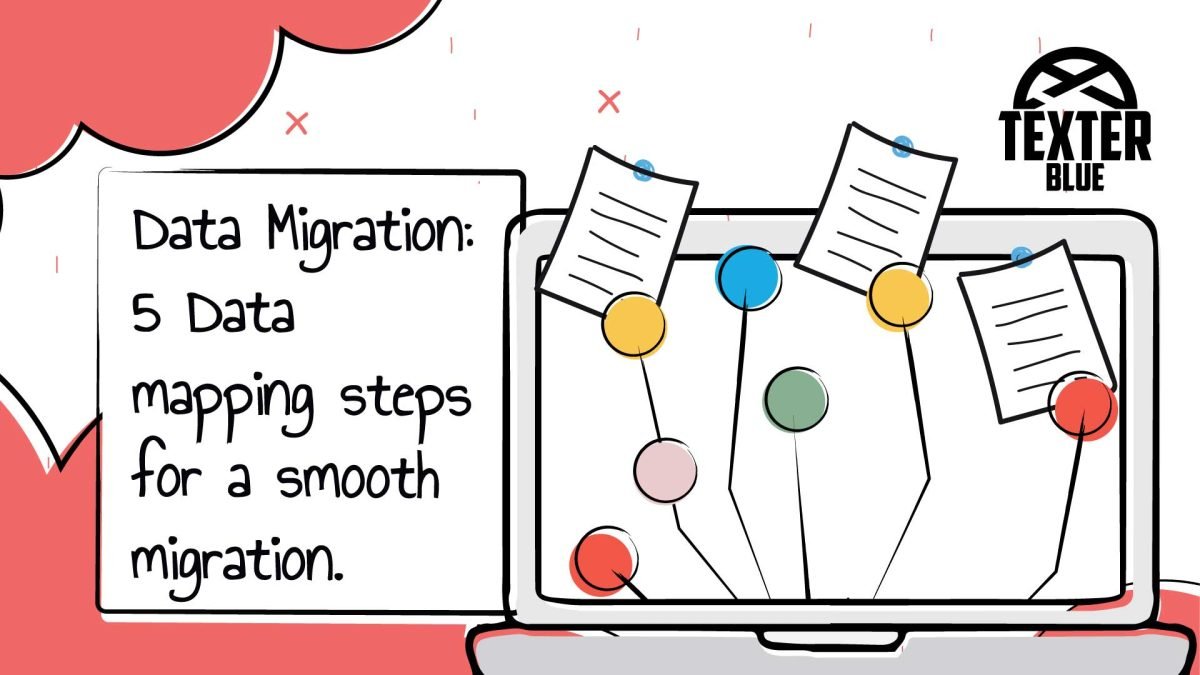Data migration, the transfer of information between systems, is a pivotal operation in modern business. At its heart is data mapping, the blueprint ensuring each piece of data finds its new home accurately.
In this article, we’ll guide you through essential data mapping steps for a seamless migration.
Simplifying Data Migration: The Role of Data Mapping
Data migration, a crucial operation in modern businesses, can be a complex task. However, there’s a proven strategy to streamline this process: enter data mapping.
Much like planning a move, data mapping involves identifying specific sets of data in your old system and designating their new location in the target system.
In straightforward cases, the process is clear-cut. For example, financial records from your previous accounting software will find their place in the corresponding module of the new system.
In other cases, it can get more intricate. Documents, where individual data points may need to be restructured or reclassified. Data mapping ensures that each piece of information seamlessly transitions into its designated location.
In more complex scenarios, like migrating an entire database after a company-wide restructuring, data mapping becomes an indispensable tool. Regardless of the scale, data mapping promises a smoother transition, guaranteeing that every piece of data finds its rightful place in your new digital landscape.
5 Steps to data mapping for seamless data migration
1) Evaluate which source data is truly necessary for the migration
Just as careful planning is crucial before a move, a well-thought-out data mapping methodology is essential for a successful data migration.
To start, assess your data assets and determine what truly needs to be moved. This includes identifying:
- Duplicate data
- Outdated data
- Redundant data
- Irrelevant data
To efficiently identify and categorize this data, consider using an automated data lineage solution. This tool can swiftly create a map of your current data assets, detailing their journey through your data landscape.
Identify and remove datasets that are redundant or generated from unused tools. Likewise, clear out training datasets from early AI modeling endeavors.
Once you’ve streamlined your data, it’s time to begin the data mapping process.
2) Determine the Data Structure of Both Source and Target Data
Structured. Unstructured. Semi-structured. Arrays. Lists. Trees. Text. String. JSON. XML. CSV.
The primary step in data mapping entails scrutinizing a data asset earmarked for migration, discerning its organization within your systems. Next, consider its destination. In what format must it be presented there?
If the formats align, the transition is straightforward. However, if disparities arise (as is often the case), proceed to the subsequent step.
3) Determine the steps required to convert one structure into another
How do you turn a JSON file into XML? How can you refine a customer database, eliminating duplicates and unresponsive leads, to create a robust list of potential clients?
This transformational process relies on a bit of data magic. Techniques like aggregation, discretization, generalization, conversion, normalization, filtering, and smoothing come into play.
Identifying the right transformation method is key to shifting your data from its source structure to the desired target structure.
4) Establish the “map”: the set of processing instruction
As you progress through the data migration process, a pivotal phase emerges, creating the mapping plan. This plan serves as the guiding framework for your data migration team. It outlines the precise steps they will follow to efficiently transfer, arrange, and integrate data from the source system to its designated location in the target system.
This mapping plan ensures that every piece of data finds its rightful place in the new digital landscape. This step is alike organizing the wealth of information gathered in previous stages. The process is often facilitated by a dedicated data mapping tool, streamlining the transition and ensuring that data is mapped accurately and efficiently.
A well-structured mapping plan not only minimizes the risk of data discrepancies but also optimizes the overall efficiency of your migration process.
5) Verify the process through testing
When it comes to data migrations, here’s the key: you can only be sure it works when it actually does.
Test out your freshly designed mapping plan on a small portion of source data. Did it do the job? Are the outcomes where they should be, following the right structure?
Repeat this process for every other data set in line for migration. This systematic approach guarantees a smooth and reliable transition for all your data.
Time to migrate!
Once your data mapping plan is set and tested, it’s time to move ahead with the migration.
Use the automated data tracking system, which helped in deciding which data to migrate. It keeps tabs on all data as you progress, making sure everything is in the right place.
Visualizing data flow makes it easy to see how your target system aligns with the plan. The automated system regularly checks and updates this as the migration happens.
Follow these steps, and your data will transition smoothly without any worries about changing addresses.
Texport: Alfresco Exports & Imports by Texter Blue
Introducing a new mindset for upgrades and content transfer, we’ve developed a solution that exports and imports at object level supporting all Alfresco object types and it carries the symbology of true export.
Full Support – Supports content, metadata, relationships, permissions, versions, tags, categories, sites-memberships, and all other repository node relations from a source Alfresco repository to any target Alfresco instance.
Optimized – Multi-threaded tool that leverages low level OS and cloud resources via its close relation with Python, as such it’s fully optimized for export/import throughput, ingestion rates of up to 2800 nodes/sec.
Native S3 – Native S3 support allowing full repository bidirectional transfer from a normal fileContentStore into an S3ContentStore
Clean Data – Move all content or choose to archive or dispose certain areas of the repository – for example the archiving part of the audit-trail to increase database performance.
Record – Keep a record of all exports and imports executed for validation and data quality purposes. It ships with an ElasticShearch integration providing robust dashboards in Kibana for content transfer executions overview.
Cloud Ready – Container friendly and Cloud ready, adding security and backup options in future relations.
A clever digital transformation…
Texport provides the opportunity to implement a clever digital transformation to the way the organisation interacts with their digital content, consolidating and enriching data – tagging, categorising, auto-classification, applying AI – thus increasing efficiency and optimising the investment.
Download here the Texport – Alfresco Exports & Imports – DataSheet:
By submitting you confirm that you have read and agreed with our Privacy Policy.
If you’re struggling with your digital transformation, remember… you are not alone in this… Texter Blue is here to help you providing the best results! Make sure you read our news and articles and contact us.

